
Shortly before the massacres in Buffalo, New York, and Uvalde, Texas, we spoke with author and journalist Mark Follman about the epidemic of mass shootings in the United States. Follman is the author of the new book “Trigger Points: Inside the Mission to Stop Mass Shootings in America,” in which he closely examines how a community-based prevention method called “behavior threat assessment” can help prevent mass shootings. The method “brings together collaborative expertise, primarily in mental health and law enforcement” to recognize behavioral signs in perpetrators that often lead to shootings. Follman also discusses the “copycat” issue among mass shooters and explains why he thinks it’s harmful for the media to sensationalize perpetrators of mass shootings.
Transcript
AMY GOODMAN: Families in Uvalde, Texas, are beginning to make funeral arrangements following Tuesday’s massacre at the Robb Elementary School, where an 18-year-old gunman shot dead 19 fourth graders and their two teachers. The police in Uvalde are coming under mounting criticism for their handling of the shooting and for releasing misleading and often inaccurate information about what happened. Authorities now admit the gunman was able to enter the school unobstructed through a door that was apparently unlocked. He then remained in the school for over an hour before he was shot dead by an off-duty Border Patrol agent. During this time, local police blocked parents from trying to enter the school, in one case handcuffing a mother who drove 40 miles to the school to save her kids. One father was tasered.
The massacre in Uvalde is the 27th shooting at a school this year. The shooting also came just 10 days after an 18-year-old self-described white supremacist attacked a grocery store in the heart of Buffalo’s African American community, shooting dead 10 people, all of whom were Black. Three of the victims are being buried today.
Well, shortly before the Buffalo shooting, I interviewed Mark Follman, national affairs editor at Mother Jones. He’s author of the new book Trigger Points: Inside the Mission to Stop Mass Shootings in America. In the book, he closely examines another school shooting, one that took place at Oxford High School in Michigan, where a 15-year-old student shot dead four students last November. Seven people were injured, including a teacher. The shooting occurred just after school authorities had a meeting with the student and his parents about his, quote, “concerning behavior.” The student was allowed to return to class carrying a backpack that contained a semiautomatic pistol which his father had bought just days before. The gunman’s parents were later arrested after a manhunt.
Well, on Thursday, hundreds of Oxford High School students assembled on their school’s football field, forming a giant “U” in solidarity with victims of the massacre in Uvalde. Other walkouts occurred across the country.
I asked Mark Follman to talk more about the Oxford High School shooting and how it relates to his book, Trigger Points.
MARK FOLLMAN: I continue to report on this case and just published another piece about it in Mother Jones this week looking deeper into its details, because it is a particularly stark case in terms of all of the warning signs that were present prior to the attack. And this is especially true in school shootings. There are so many cases, going back in time, that I’ve dug into for my book, Trigger Points, and my further reporting on this, where you see a number of people around the perpetrator had indications that an attack was coming. Often there appears other students who know in some way — they may not know what to do about it, or they may not take it seriously. That’s happened in a lot of cases over the years.
In this case, you also had a very stark situation with the parents, as you were describing, who seemed to just completely ignore, if not enable, what their child was doing. And there are also big questions in this case about how the school handled it, when people on the staff, teachers and other faculty, became alarmed, deeply alarmed, about the student, to the point that they were essentially demanding that the parents remove him from the school, and yet then allowed him to go back to class the day of the shooting. So, it’s really a very tragic case study in the lessons that still haven’t been learned, and yet should be, about this problem that we see over and over again in our country, and that are well understood in the field of behavioral threat assessment, which is the focus of my book, this prevention method, where there are opportunities to get in the way of this before it happens.
And so, with that perpetrator in Michigan, you know, he was posting dark things on social media, including photos of him holding the gun that his parents had purchased in the days before the attack. He had texted with peers about — you know, sort of “joking,” quote-unquote, about “I’m gonna shoot up the school.” I mean, he was making comments like that three months before he did it. And these signs continued to escalate as the attack approached, which is also a behavioral pattern seen in virtually all of these cases, to the point where in, you know, the days before the attack he was searching for ammunition on his cellphone. A teacher saw that the day before the shooting and reported it to administrators or faculty at the school. And the next day, there’s a teacher in class who observes him making a violent drawing on a math sheet, including comments that say things like “Blood everywhere. The thoughts won’t stop. Help me. My life is useless” — you know, clear signs of suicidal thinking. This is a range of warning signs that are well known to this prevention field. And, you know, there are big questions in this case as to why they weren’t seen or taken seriously, or whatever the case was there that allowed such a glaring situation to continue to escalate toward its tragic outcome.
AMY GOODMAN: And the idea that the school allowed the parents to say, “No, he’ll stay in school,” why bother having a meeting if you’re going to just completely go by what the parents are saying? Now, they end up going into hiding. And if you could then also talk about this new development, I mean, in dealing with mass shootings at a school, where the parents are actually charged?
MARK FOLLMAN: Right. Yeah, this case is unprecedented in that way, where the local prosecutor has brought involuntary manslaughter charges against the parents in this case. And, you know, it’s going to be a very interesting test of potential criminal liability, that we’ve never seen that before in a case, in a school shooting case. You know, there’s this interesting set of legal questions there, whether or not that will be proven in court, whether or not the laws in the state of Michigan will accommodate that. But the prosecutor herself said, in a press conference announcing these charges, that she wanted to make an example out of this and try to deter other situations like this in the future, that speaks to the availability and access to firearms for people who clearly shouldn’t have that. In this case, you know, the question of how the gun was secured or not at home is at issue in civil lawsuits that have been been brought by victims’ families. And then there’s the criminal question.
So, you know, I want to be clear here also that this is a complicated problem. And I try to be careful about ascribing blame, because, you know, clearly the role of the parents in this case — and there are other cases, too, where parents are unhelpful in a worsening situation like this. And then there’s also the role of the school, which is obviously vitally important in terms of how they handled this apparent rising danger. One of the things that I think is very interesting about the method of threat assessment is that it’s fundamentally a paradigm of shared responsibility, of community-based violence prevention. So the blame really falls on everyone here. It falls on the family, on the school, on local law enforcement to the extent that they may be aware of a problem. That also exists in many cases going back in time. So, you know, there are really some big questions here about how we can do better as a society to get in front of this problem when we can see it coming, when there’s opportunity to see it coming. And that’s one of the fundamental themes of my book. You know, we have big myths about mass shootings. One of them is that — this idea that mass shooters just snap and come out of nowhere. And that’s not true. These are not impulsive crimes. As I was saying earlier, they’re planned. There are a lot of warning signs along the way. And there’s a lot more we can do to create awareness about that, to try to step in and intervene before it’s too late.
AMY GOODMAN: So, let’s talk about that. What are the trigger points? What exactly is behavioral threat assessment? And then fold it into the work you’re doing at Mother Jones with this mass shooting database that you’ve been keeping for years.
MARK FOLLMAN: Yes. So, what threat assessment is, is a prevention method that brings together collaborative expertise, primarily in mental health and law enforcement, in a community, working with leaders in those professions, as well as others, in the setting where a program is in place. So, in a school system, you also have administrators, school psychologists and counselors involved. In a workplace setting, you would have HR professionals or other personnel specialists involved. Often there’s partnership with local agencies in county mental health and juvenile services, other kinds of social services programs.
And the people who serve on these teams, their mission is to evaluate concerning cases as they come up. And in most situations, that is when someone, an ordinary person, reaches out for help because they’re worried about the way someone is acting, or perhaps appearing to plan violence. And when that’s the case, the team uses a set of protocols to evaluate what’s going on here. They’ll interview people around the subject. They’ll talk to the subject themselves, try to understand: What’s the problem here? And, you know, can we step in and help?
The method, fundamentally, is preventative. It is not predictive. There’s no way to predict who’s going to become a mass shooter. That’s another myth that we have about this. You can’t profile mass shooters in that way. It’s simply not possible. The research is very clear about that in this field. Instead, what the field does is to look at the set of behaviors and circumstances that lead up to these attacks, as I was describing about the Oxford case, kinds of warning signs that are recognizable, from threatening communications to signs of suicidality, personal deterioration to what are known as triggering events, some kind of major problem that a person goes through that may set off violence that they’ve been planning. So, there’s a whole range of factors that a team will look at to evaluate the level of danger and also to think about what are the best ways we can try to help this person. Fundamentally, that’s the goal here. It’s a dual goal. It’s to head off what appears to be planned and approaching violence, while at the same time getting help to someone who is in serious need of help.
And there are many cases where this has worked successfully, that I write about in Trigger Points, watching teams do this work, looking at their case files over long periods of time. We never hear about these, because it’s not news when nothing happens. That’s the evidence of success in these cases, when there is not a violent outcome where there was concern that there would be. But it’s remarkably effective when it’s done well, in the programs where I was able to observe over periods of time the work being done.
AMY GOODMAN: Mark Follman, you were really the first journalist to deeply document the copycat problem of, for example, Columbine. Talk about how you avoid that.
MARK FOLLMAN: Yeah, it’s a challenging issue, because it’s important for the news media to report on mass shootings. They have a big impact. They’re a significant part of the gun violence problem we have, which is much broader in other ways. But there’s a strong public interest in these cases. And it’s also important that we report on them clear-eyed and accurately so that there isn’t misinformation about them. That’s happened a lot, too. I’m not sure that people are so aware of it. There are people who are misidentified as mass shooters in the immediate aftermath of these cases. They’re used for political arguments in ways that are wrong or, you know, perpetuate the mythology. So, there’s a strong need for good media coverage of these.
And yet, we do a lot of harm when we sensationalize these cases, which historically has been the pattern, you know, putting excessive focus on the perpetrators, splashing their pictures everywhere, putting their name in headlines. We see less of this now, because the media has, I think, come to understand that that’s problematic. But there’s very clear case evidence with the copycat problem, going back decades, that perpetrators of this crime often are seeking that kind of sensational media attention.
And it was — this problem has never been more pronounced than it was with the Columbine mass shooting. So many school shooters look to that case and the sort of mythology around the story of Columbine as inspiration. And so, when the news media constantly recycles those themes, you know, you literally see — even to this day, you’ll see media figures and public officials, as well, refer to school shootings as, quote, “Columbine-style attacks.” This keeps this at the sort of height of consciousness. And we don’t really need to say that to understand what a school shooting is anymore, sadly.
So, I think, you know, there are ways in which the news media can frame this problem differently. I call it — I use a term I call “strategic diminishment,” to try to, you know, report forensically on these cases as we need to, the way I was describing, but also to shrink the frame around the perpetrators, to stay away from the sensational ideas that these are, you know, sinister, evil villains, you know, treat them as these kind of almost mythic figures, in a way, by splashing their crazed images on the front pages, or their posing on social media with guns. Well, that’s how they want to be seen in the public eye, and we don’t need to do that to report on what’s happened and to provide that context.
AMY GOODMAN: So, I wanted to end by talking about the politics of gun control right now and the abysmal failure of containing guns in the United States. On Monday, President Biden announced a new rule to rein in ghost guns. He was joined by Mia Tretta, who survived a school shooting in Southern California in 2019. This is what she said.
MIA TRETTA: I’m speaking on behalf of two classmates who can’t be here with us, one of whom was my best friend. When I woke up on November 14th, 2019, my biggest worry of the day was a Spanish test. I was a freshman at Saugus High School in Santa Clarita, California, determined to get good grades. So, as soon as I got to school, I made a beeline for the quad to meet up with my best friend, Dominic Blackwell. It’s hard for me to talk about Dominic. Like me, Dominic had big dreams, liked doing well in school and planning for our futures. We spent the morning like any other, laughing and talking, until we heard a loud pop. It was a gunshot, followed by six more. One of the bullets hit me in the stomach. Somehow, I was able to get up and run away. But Dominic couldn’t.
AMY GOODMAN: So, that’s Mia Tretta speaking at the White House on Monday. This is when President Biden finalized a new federal rule that would regulate ghost guns more like regular guns — ghost guns, of course, firearms without serial numbers that are usually assembled from kits, often sold over the internet or created in 3D printers, the Justice Department reporting about 6,000 such guns are recovered at crime scenes each year. So I wanted to ask you about this particular regulation. But the idea that this is as far as the administration can go? I mean, you have now the Democrats controlling the House, controlling the Senate and the presidency, and yet — and the NRA at its weakest point in history. What does it take, Mark Follman?
MARK FOLLMAN: Yeah, well, this is a question that we have faced for a long time. And, you know, to be honest with you, this is one of the reasons that I was led to the subject of the book, because I became frustrated, like I think so many Americans are, with the political dynamics that are so stuck, so entrenched, so polarized over the issue of gun regulations. And it is remarkable that we don’t have more effective regulations more broadly.
You know, there’s a very basic reason for that, which is that a lot of this is a matter of what goes on at the state level. You know, we’ve seen that Congress is not going to take action on this. And the political framework of that, I think, is well known and well understood in terms of the power of the gun lobby. Even with the NRA becoming more weakened in recent years, I think the power of what they were able to do over decades politically to, you know, dissuade political figures in the Republican Party, of course, but also in the Democratic Party, from doing anything meaningful about gun reform is just — you know, it’s a deep, long-term problem.
Now, there are some, I think, very powerful grassroots efforts that have gone on in the opposite direction over the past decade, and it’s created progress at the state and local level. The problem is, you really need a broad national picture of change for it to be truly effective. And we still have a very patchwork system of regulation at the state and local level in terms of, you know, some places having very strict laws and others being very loose, and loosening further in recent years. So, the reality of firearms in our country — we have an estimated 400 million of them now, loosely regulated in many places — that’s not going away anytime soon in a broader, meaningful sense. And therefore, the question for me became: What more can we do to deal with this problem?
I think what they’ve just done at the White House with ghost guns is very important. That’s a rising issue that’s very concerning, this new type of access to firearms in that way. But again, you know, this can’t be the only way that we address this major societal issue, which is really a public health crisis. Seeing it through that lens, I think we can think more in terms of prevention work. And dare I say that, you know, there’s hope in that. I mean, that’s really what led me to do the book, as well, that we don’t have to be resigned to the idea that we’re just going to be stuck forever in this battle, this polarized battle over firearm regulation. There are other things we can do to get in the way of this problem to prevent it from happening.
AMY GOODMAN: Mark Follman is national affairs editor at Mother Jones. He’s author of the new book Trigger Points: Inside the Mission to Stop Mass Shootings in America. I spoke to him prior to the recent mass shootings in Uvalde, Texas, and Buffalo, New York.
Oh, the NRA is meeting for the first time in three years today. They’re meeting in Houston, 300 miles from Uvalde. Guns will be banned during Donald Trump’s speech to the NRA today. Meanwhile, Senate Minority Leader Mitch McConnell has directed Texas Republican Senator John Cornyn to work on so-called bipartisan gun safety legislation with key Democrats, including Senator Chris Murphy of Connecticut, who represents Sandy Hook, where a gunman shot dead 26 people, including 20 children between the ages of 6 and 7, nearly a decade ago.
Coming up, we go to Minneapolis. It’s two years after the police murder of George Floyd. We’ll speak with the city’s first Black democratic socialist councilmember. Stay with us.

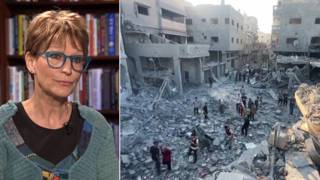
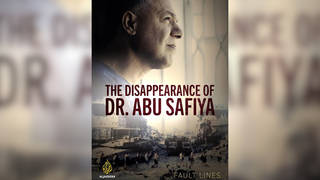
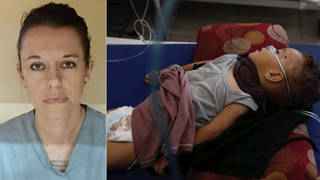
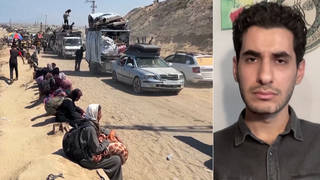
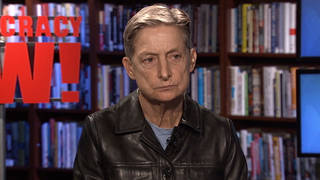
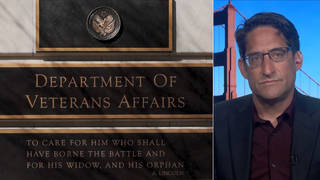
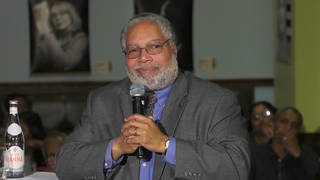
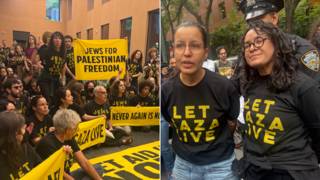

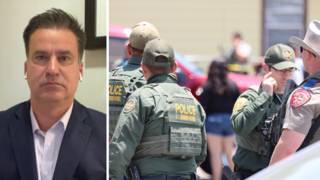
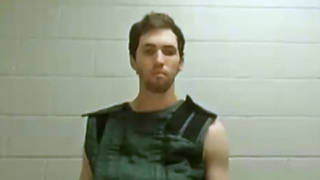
Media Options